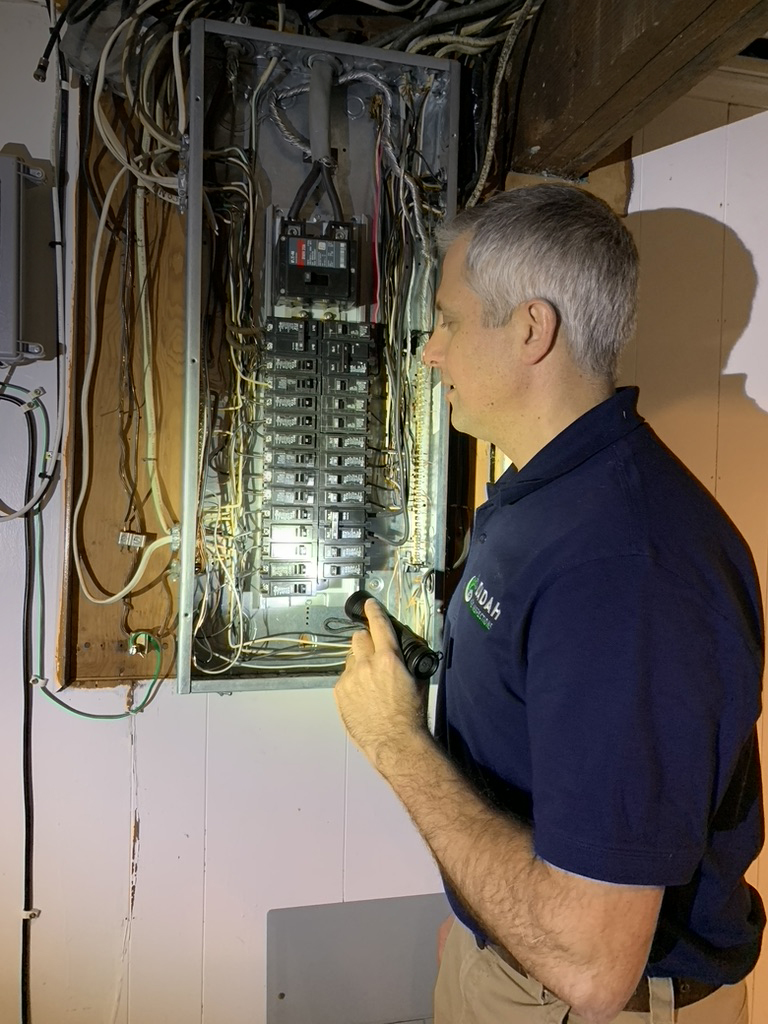When it comes to ensuring the safety and functionality of a home’s electrical system, home inspectors play a crucial role in identifying potential hazards and recommending necessary repairs or upgrades. One common practice during electrical inspections is the removal of the dead front cover from an electrical panel. However, there are instances where a home inspector may choose not to remove the dead front, especially if safety concerns are present. In this blog post, we’ll explore why a home inspector removes the dead front from an electrical panel and the scenarios where safety considerations override this procedure.
- Purpose of Dead Front Removal:The dead front cover of an electrical panel is the outer cover that conceals the wiring, circuit breakers, and electrical components inside. Home inspectors remove the dead front for several reasons:
- Visual Inspection: Removing the dead front allows inspectors to visually inspect the condition of wiring, connections, breakers, and electrical components for signs of wear, damage, improper installations, or code violations.
- Safety Checks: Inspectors can assess the safety of the electrical panel, including proper grounding, bonding, overcurrent protection, clearances, and compliance with electrical codes and standards.
- Accessibility: Inspectors can check for accessible and labeled circuits, proper labeling of breakers, and identification of shut-off switches for emergency situations or maintenance needs.
- Scenarios for Dead Front Removal:
- Routine Inspections: During routine home inspections, home inspectors typically remove the dead front cover of electrical panels to conduct thorough evaluations of the electrical system’s condition and safety.
- Pre-Purchase Inspections: Buyers and sellers often request comprehensive home inspections that include electrical assessments, necessitating dead front removal to uncover potential issues and ensure electrical safety before property transactions.
- Code Compliance Checks: Inspectors verify that electrical panels meet current building codes, safety standards, and regulatory requirements, which may require dead front removal for detailed inspections and assessments.
- Safety Concerns and Exceptions:While dead front removal is a standard practice in most electrical inspections, there are situations where safety concerns may override this procedure:
- Visible Hazards: If inspectors observe visible hazards or unsafe conditions during initial visual inspections, such as exposed live wires, damaged components, or signs of arcing or overheating, they may refrain from further disassembly to avoid exacerbating safety risks.
- Inaccessible Panels: In cases where electrical panels are obstructed, inaccessible, or sealed shut due to tampering, modifications, or safety concerns, inspectors may not be able to safely remove the dead front without specialized tools or expertise.
- Manufacturer Recommendations: Some electrical panel manufacturers provide specific guidelines or warnings against unauthorized access or disassembly of dead fronts, which inspectors respect to avoid liability or warranty issues.
- Professional Judgment and Communication:Home inspectors exercise professional judgment and discretion when deciding whether to remove the dead front from an electrical panel, prioritizing safety, compliance, and ethical standards. Inspectors communicate findings, limitations, and safety concerns with clients, recommending further evaluations or repairs by licensed electricians when necessary.
In conclusion, the removal of the dead front cover during electrical inspections serves a crucial role in assessing the safety and functionality of a home’s electrical system. While it’s a standard procedure in most cases, safety considerations and specific scenarios may warrant exceptions or limitations. Homeowners, buyers, and sellers should work with reputable home inspectors and licensed electricians to ensure thorough evaluations, address safety concerns, and prioritize electrical safety in residential properties.

